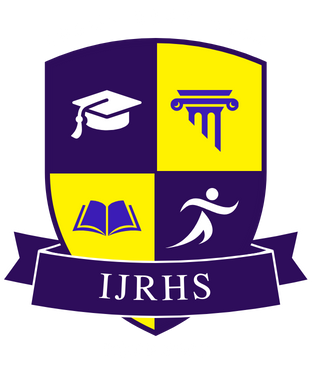![]()
Ashutosh Tiwari
Independent Researcher
Uttar Pradesh, India
Abstract
This study undertakes a comprehensive examination of how bilingual adolescents harness language choice as a vehicle for identity negotiation, expression, and psychological well-being. While prior work has highlighted correlations between bilingualism and cognitive advantages or academic outcomes, less attention has been paid to the nuanced, situational decisions youth make when selecting one language over another and the identity work embedded in those decisions. Using a mixed-methods psychological framework, we surveyed 250 adolescents (ages 13–18) from diverse bilingual backgrounds—English–Spanish in the United States and English–Hindi in urban India—to quantify language use patterns across family, peer, and school contexts. We then conducted in-depth interviews with a purposive subsample of 30 participants to capture rich, first-person narratives around moments of code-switching, language loyalty, and identity affirmation. Quantitative findings reveal clear domain-specific preferences: heritage language predominates at home, majority language predominates with peers, and a complex interplay emerges in academic settings. Regression analyses demonstrate that heritage language frequency in familial contexts is a robust predictor of ethnic identity commitment, whereas majority language use in peer contexts predicts feelings of social belonging and self-efficacy. Qualitatively, adolescents describe heritage language as the “voice of the soul,” carrying emotional resonance, intergenerational continuity, and a sense of cultural authenticity; majority language, by contrast, is portrayed as the “passport to modernity,” facilitating broader social inclusion and aspirational mobility. Importantly, flexible code-switchers—those who adapt language use fluidly across contexts—report a more integrated, multifaceted self-concept, navigating between cultural group memberships with psychological agility. These findings underscore that language choice is not merely communicative but constitutes a strategic identity performance with implications for adolescent well-being, academic engagement, and social integration. We discuss educational and clinical applications: validating heritage languages in schools, training practitioners to recognize language-based identity cues, and designing interventions that leverage bilingualism as a resource rather than a barrier.
Keywords
Bilingual Adolescents, Language Choice, Identity Formation, Social Identity, Code-Switching
References
- Benet-Martínez, V., & Haritatos, J. (2005). Bicultural identity integration (BII): Components and psychosocial antecedents. Journal of Personality, 73(4), 1015–1049. https://doi.org/10.1111/j.1467-6494.2005.00337.x
- Benet-Martínez, V., Leu, J., Lee, F., & Morris, M. W. (2002). Negotiating biculturalism: Cultural frame switching in biculturals with oppositional vs. compatible cultural identities. Journal of Cross-Cultural Psychology, 33(5), 492–516. https://doi.org/10.1177/0022022102033005006
- Braun, V., & Clarke, V. (2006). Using thematic analysis in psychology. Qualitative Research in Psychology, 3(2), 77–101. https://doi.org/10.1191/1478088706qp063oa
- Cummins, J. (2000). Language, power and pedagogy: Bilingual children in the crossfire (2nd ed.). Multilingual Matters.
- Dewaele, J.-M., & Wei, L. (2014). Attitudes towards code-switching among adult polyglot learners. International Journal of Multilingualism, 11(2), 282–302. https://doi.org/10.1080/14790718.2014.903395
- Erikson, E. H. (1968). Identity: Youth and crisis. W. W. Norton & Company.
- Fishman, J. A. (2001). Handbook of language and ethnic identity. Oxford University Press.
- Giles, H., & Coupland, N. (1991). Language: Contexts and consequences. Open University Press.
- Grosjean, F. (2010). Bilingual: Life and reality. Harvard University Press.
- Lambert, W. E. (1974). Culture and language as factors in learning and education. In F. E. Aboud & R. D. Meade (Eds.), Cultural factors in learning and education (pp. 91–122). Brookline Books.
- Lee, R. M., & Robbins, S. B. (1995). Measuring belongingness: The Social Connectedness and the Social Assurance scales. Journal of Counseling Psychology, 42(2), 232–241. https://doi.org/10.1037/0022-0167.42.2.232
- Norton, B. (2013). Identity and language learning: Extending the conversation (2nd ed.). Multilingual Matters.
- Phinney, J. S. (1992). The Multigroup Ethnic Identity Measure: A new scale for use with diverse groups. Journal of Adolescent Research, 7(2), 156–176. https://doi.org/10.1177/074355489272003
- Phinney, J. S., Horenczyk, G., Liebkind, K., & Vedder, P. (2001). Ethnic identity, immigration, and well-being: An interactional perspective. Journal of Social Issues, 57(3), 493–510. https://doi.org/10.1111/0022-4537.00225
- Poplack, S. (1980). Sometimes I’ll start a sentence in Spanish y termino en español: Toward a typology of code-switching. Linguistics, 18(7–8), 581–618. https://doi.org/10.1515/ling.1980.18.7-8.581
- Rampton, B. (2011). Style and stylization in interaction: A bridge from talk to sociolinguistics. Cambridge University Press.
- Tajfel, H., & Turner, J. C. (1986). The social identity theory of intergroup behavior. In S. Worchel & W. G. Austin (Eds.), Psychology of intergroup relations (pp. 7–24). Nelson-Hall.
- Ward, C., Bochner, S., & Furnham, A. (2001). The psychology of culture shock (2nd ed.). Routledge.
- Wei, L. (2002). Toward a social network theory of code-switching. Journal of Sociolinguistics, 6(1), 71–90. https://doi.org/10.1111/1467-9481.00172
- Yow, W. Q. (2016). Code-switching and identity construction among bilingual youth. Journal of Language and Social Psychology, 35(5), 576–589. https://doi.org/10.1177/0261927X16642516
